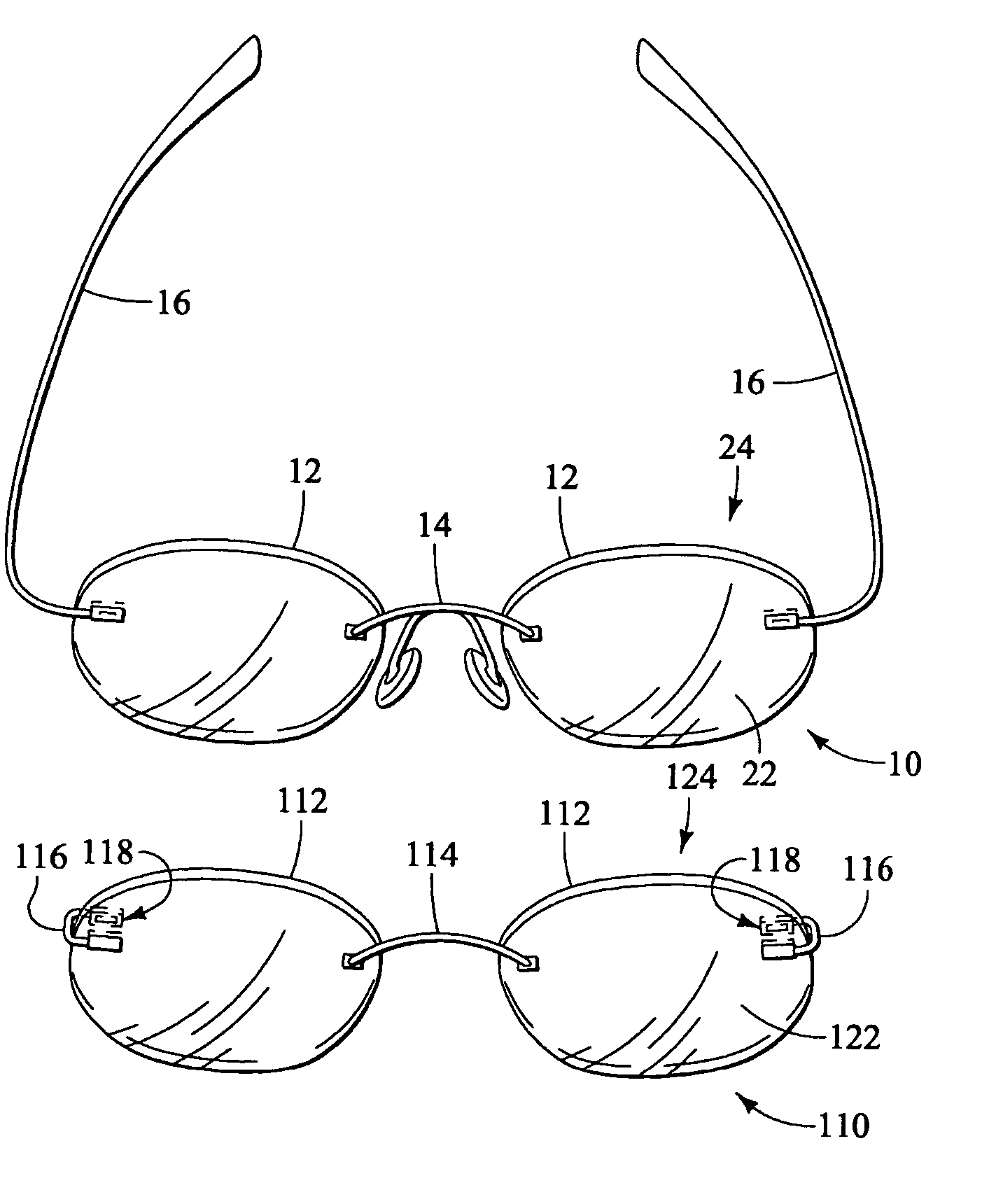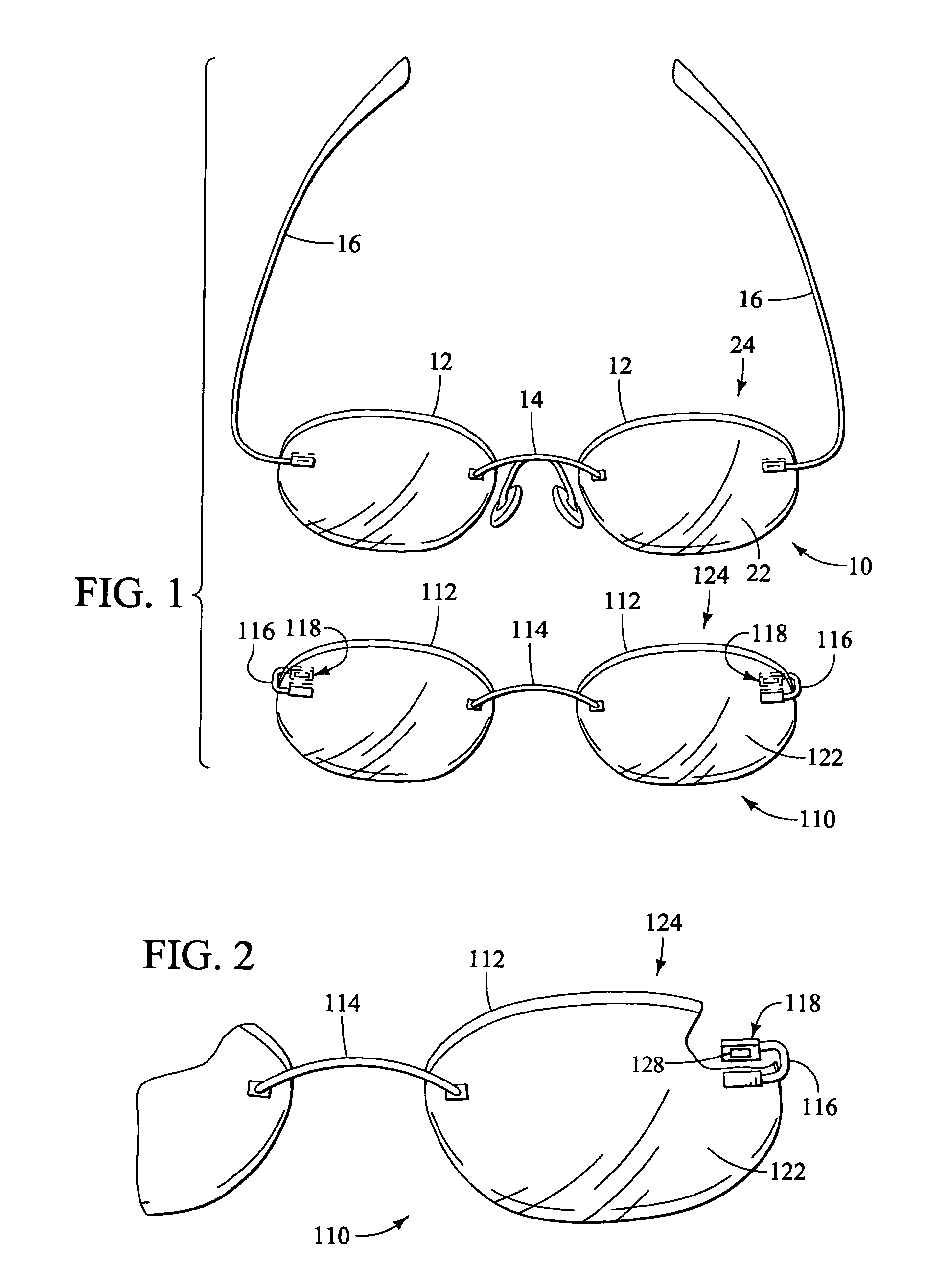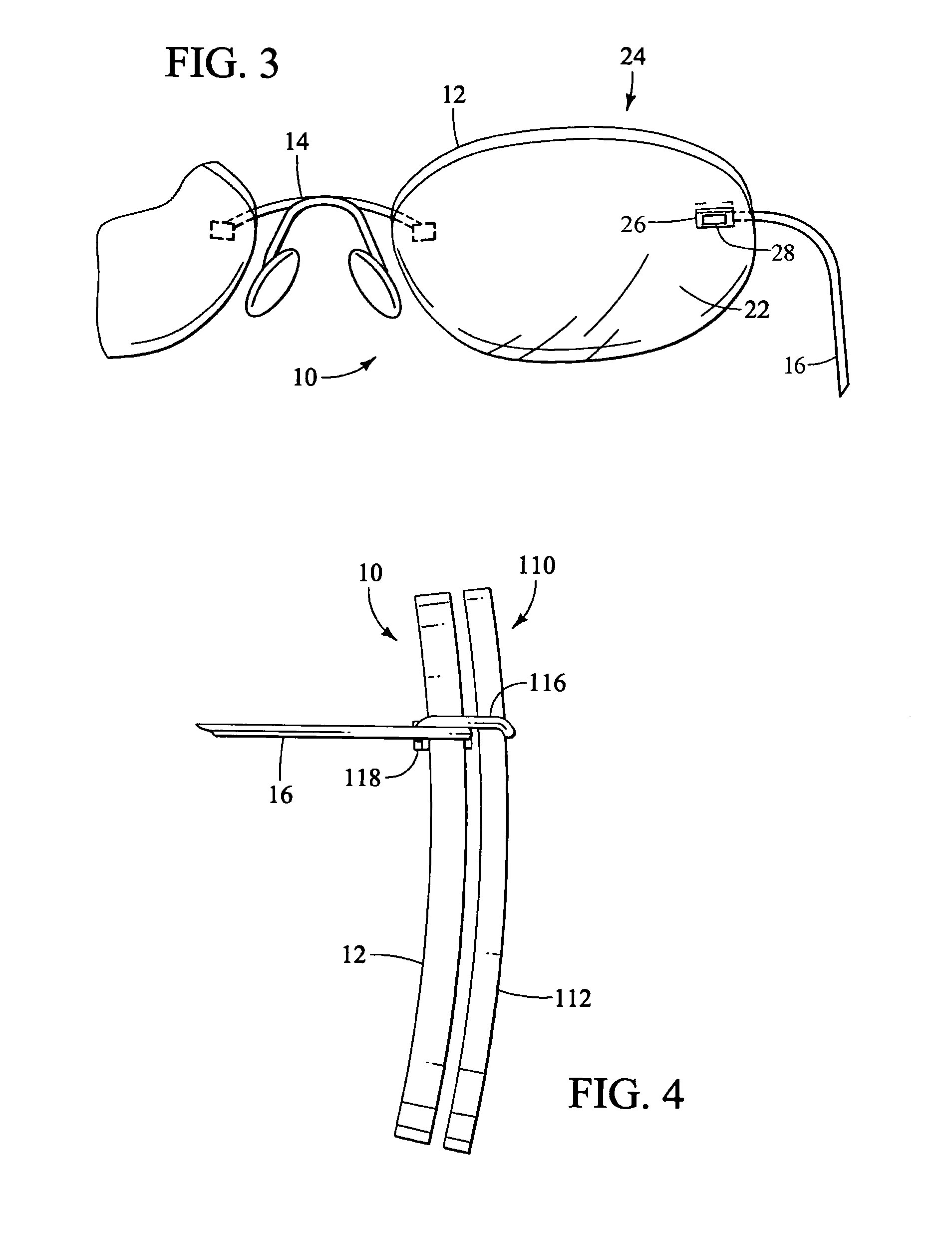A significant
disadvantage of this design is that it is unattractive, overly complicated, impossible to segregate from the primary frame, and does not permit or accommodate anyone other than farsighted individuals.
A significant
disadvantage of this design is that it is unattractive, overly complicated, and resists easy and immediate removal of the auxiliary lens assembly.
A significant
disadvantage of this design is that it is unattractive, overly complicated, and resists easy and immediate removal of the auxiliary lens assembly.
As stated, these and other mechanically clipped-on devices for holding auxiliary lenses are cumbersome and unattractive, particularly for frameless or rimless designs.
The magnetic engagements themselves are insufficiently strong to retain the auxiliary frame assembly.
They do not have the advantages of the early flip-up designs, which permitted quick movement of the auxiliary assembly out of alignment with the primary assembly without separating it from the primary assembly.
A significant disadvantage of this design is that it is unstable, relying on tenuous repositioning and magnetic forces alone to align and support the auxiliary assembly to the primary assembly.
Another significant disadvantage of this design is that it causes the auxiliary frame to be positioned into the
forehead of the wearer, making raising the auxiliary assembly fully perpendicular to the primary assembly impractical.
One disadvantage of this design is that it fails to limit the rotation of the auxiliary lens assembly.
Another disadvantage is that it is aesthetically unappealing, due in part to the long shelter arm requirement.
Another disadvantage is that it relies on a bridge
magnet or bride hook for stability.
Another disadvantage is that the device relies on magnetic force to pull the magnetic housing forward, over a rearward protruding lens locker, requiring the user to push the auxiliary frame awkwardly rearward, into the primary frame, to disengage the magnetic housing from over the lens locker.
Another disadvantage is that the device is complex and expensive to manufacture.
As a result,
peripheral vision through the lens is limited.
This can give rise to both convenience and safety issues.
These processes increase the time required to effect the maneuver, and require an increased time in which the direction in which the car is traveling at high speed is not visible.
Problems occur again when trying to back up a vehicle.
The resulting disadvantage is that the prior art designs for primary and auxiliary lens assemblies involve delicate
soldering of numerous extraneous parts which extend from the sides of the lens assemblies.
A disadvantage of this invention is that the magnetic band made of conventional
magnet materials is bulky and heavy, and the entire assembly is overly complicated.
Also, band-like magnetic materials must be ductile enough to prevent breakage, and thus the compositions of the magnetic materials suitable for use are limited.
A disadvantage of this design is that the resulting eyeglass frame is relatively bulky and the discrete magnets made of conventional materials lack sufficient power and life to support the auxiliary lens assembly to the primary lens assembly.
The disadvantage of this design is in the manufacture cost and challenges associated with
heat treating a
thin metal frame, as well as the lack of strength and life of the
magnetic field.
However, there are disadvantages associated with employing uniformly distributed magnetic materials throughout the auxiliary lens assembly.
In particular, the cost of
metallurgy associated with the manufacture of uniformly distributing magnetic materials can be high.
To date, there has not been a magnetic assembly that is compatible with frameless or rimless designs.
 Login to View More
Login to View More  Login to View More
Login to View More 


